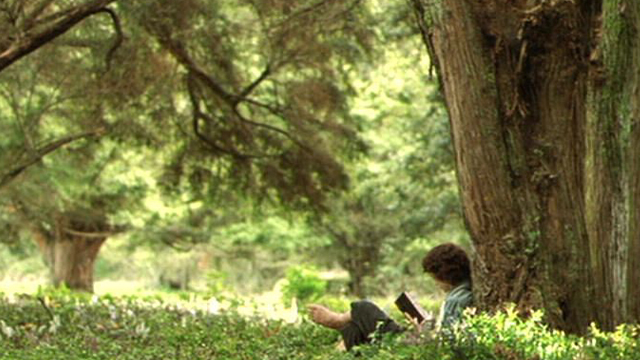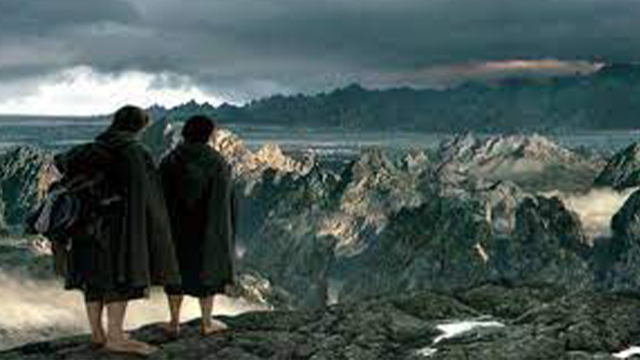20 years have passed since Peter Jackson’s Lord of the Rings: The Fellowship of the Ring ransacked theaters like a wild pack of Uruk-hai, and to this day its presence is still felt throughout the cinematic landscape. Many have tried to duplicate its success, but few have successfully achieved Jackson’s grand design — a perfect balance between intimate character drama and extraordinary, big-budget adventure.
Yet, after the extravagance of Return of the King two years later and Jackson’s Hobbit trilogy, which were essentially soulless animated blockbusters, we tend to forget that Fellowship, at its core, was a relatively small film (at least compared to the sequels) about the relationships forged between a small, diverse group of individuals whilst enduring an arduous journey. This is the pivotal step studios tend to skip when preparing their own would-be blockbuster franchises, choosing instead to lure audiences with expensive CGI and breathtaking action sequences.
RELATED: Rogue One 5th Anniversary: Still A Great Star Wars Story
The brilliance of Fellowship is the way in which Jackson, along with writers Fran Walsh and Philippa Boyens, patiently lays the foundation for the rest of the series, carefully establishing key characters such as Frodo (Elijah Wood), Sam (Sean Astin), Gandalf (Ian McKellen), Aragorn (Viggo Mortensen), and Legolas (Orlando Bloom) whilst also providing key bits of exposition that would pay off in later films.
Let’s start from the beginning.
Fellowship kicks off with a grandiose, albeit simply structured, prologue that gives us the story so far. Essentially, this is akin to the opening crawl of Star Wars, except more visually opulent:
Right from the get-go, the audience understands the fundamentals of Middle-earth and the importance of the One Ring. Now, Jackson downshifts to the Shire via a sequence that introduces Bilbo (Ian Holm), Frodo, and Gandalf. This sequence also does a great job showing off a beautiful, natural world filled with luscious trees and vegetation, inhabited by real people — a complete contrast to the bleak, barren landscapes seen in the prologue. Now, we know what’s at stake should Sauron once again take power.
As a side, we also see Frodo as a simple fellow who spends his days reading books in the forest and attending parties with his fellow Hobbits. He reads about adventures of other people, notably the exploits of Bilbo, but has no desire to take part in any adventures. By contrast, at the end of Return of the King, he’s writing his own adventure for others to read. It’s a minor but interesting setup that doesn’t pay off until the last twenty minutes of the final movie.
We also learn quite a bit about wizards during the opening sequences in the Shire. Gandalf enjoys himself at parties but doesn’t take kindly to nonsense. When Merry (Dominic Monaghan) and Pippin (Billy Boyd) set off a rather large firework shaped like the dragon Smaug, the scraggly-haired, gray-robe donned wizard dishes out a worthy punishment.
Keep in mind, we’re about 20 minutes into the film at this point (and about 25 minutes in the extended edition). In fact, the first major set piece — Gandalf vs. Saruman — doesn’t happen until the 40-minute mark; and even that sequence is more about Saruman’s treachery than action.
One of my favorite scenes in the trilogy entire likewise has more to do with character and plot than enthralling audiences. At around the hour mark, Frodo and Sam, now on their journey, but neither fully aware of the dangers lurking before them, happen upon Merry and Pippin. There’s a cute bit where the foursome stumble down a hill and run into some mushrooms and then this happens:
What started out as a lighthearted adventure, in which Frodo and Sam complain about sleeping on the ground, bump into some elves, and chastise Merry and Pippin for stealing some crops, quickly turns into an intense situation. This scene, shot like something out of a horror film, perfectly captures the growing dread, and ultimately ends with Frodo understanding the true power of the One Ring for the first time. It’s brilliant.
Later, we are introduced to Aragorn/Strider, who guides the four Hobbits further on their journey, but the film pauses long enough for this important character beat:
We haven’t even met Liv Tyler’s Arwen yet, but already Jackson has sown the seeds for Aragorn and Arwen’s subplot — another bit that doesn’t pay off fully until the final film. When the conclusion of their story arrives, though, audiences are fully invested and more than likely bawling their eyes out:
The first half of Fellowship of the Ring does a splendid job establishing its characters, the stakes and laying out key exposition so that the second half can lean a little harder on the action. And yet, despite the massive set pieces, including the spectacular Mines of Moria/Bridge of Khazad Dum sequence, Jackson continues to sprinkle in quieter character beats like this:
Again, this moment is a clever bit of exposition mixed with character development. We learn more about Gollum’s tragic backstory, and we see Frodo’s current predicament: the Hobbit struggles to understand his role in the story. Naturally, Gandalf reassures him and offers sound advice, further establishing Gandalf’s significance to the young hero. When the wizard dies, Frodo feels helpless and, more importantly, alone:
In the last third of the film, Jackson positions Frodo so that he’s separate from the rest of the Fellowship, where he remains until Sam proves his loyalty:
By the end of Fellowship, Frodo has evolved from a playful, carefree Hobbit devoid of responsibility to a true hero ready to take on whatever challenges await him. The character doesn’t enjoy the same significant arc in later films, which focus more on the physical and psychological tole beset by the Ring of Power, which is why it was important for the first film to establish his individual growth.
RELATED: Harry Potter Reunion Trailer Brings Iconic Cast Back to Hogwarts
Note the contrast from the beginning of the film which showed Frodo sitting in the forest reading a book by himself to the final shot in which he stands atop a mountain alongside his loyal friend Sam:


It’s such a striking bit of visual storytelling that adds so much to the experience.
That’s what makes Fellowship such a brilliant motion picture. A lesser director would have dove headfirst into the action or spent far too much time delivering dry bits of exposition. Jackson spends nearly three hours introducing this strange new world to his audience via magnificent moments like this that also expand our developing characters — in this case, we learn a little more about Aragorn through his reaction to “the kings of old”:
The big action climax in which our weary troupe takes on a legion of Urak-hai carries significance because it’s framed around Boromir’s (Sean Bean) noble death.
His arrow-ridden demise only works because Jackson devoted a good deal of time on Boromir’s character. We understand his plight, the reason for his insanity because of scenes like this that perfectly illustrate his growing frustrations:
I love that Aragorn wears Boromir’s gloves at the end of the film, signifying his acceptance of his duty to his kin. Again, minor details that go a long way in fleshing out a massive narrative that could have easily buckled under its own weight.
Even the aforementioned Mines of Moria sequence features tiny character flourishes that aid in the big picture. Merry’s pre-established clumsiness leads to Gandalf’s death, Boromir’s love of the “little ones” causes him to grab Merry and Pippin and leap across the collapsing stairs, Legolas saves Gimli’s life, and we even see just how important the quest to destroy the Ring is when Gandalf sacrifices his life to save the Fellowship.
In other words, nothing in Fellowship is action for action’s sake. Every scene serves a grander purpose either by communicating the importance of the journey to the audience, or further developing the characters. As such, Return of the King works wonders because, after all the set up great and small — from Sam’s powerful loyalty to Aragorn’s personal feelings of inadequacy – the payoff is absolutely spectacular on both a visual and emotional level.
(As an aside, this is why I’m so excited for more of Denis Villeneuve’s Dune series. The first film, released in October, similarly spent nearly three hours establishing its massive universe. Now, in Dune: Part II, he can throw all the battles and set pieces he wants at the screen because the audience will already be fully on board. Hopefully, Villeneuve sticks the landing.)
Of course, it’s sad that after all of these years no other trilogy has matched Peter Jackson’s grand design. Christopher Nolan’s Dark Knight trilogy comes close, and Marvel has certainly done an excellent job sprinkling its ever-expanding universe with likable characters. Even so, nothing has quite captured the magnificence of Lord of the Rings, mostly because studios either want to skip Fellowship and go straight to The Two Towers or misinterpret what made Fellowship so good to begin with.
After all, while Lord of the Rings eventually evolved into a massive billion-dollar blockbuster franchise, its roots and beginnings center around four Hobbits, a wizard, an elf, a dwarf, and two men – all of whom truly represent The Fellowship of the Ring.










